Abstract
1. Two forms of monoamine oxidase activity were differentiated in rat mesenteric and femoral artery by means of substrate and inhibitor specificities: one form deaminated tyramine, 5-hydroxytryptamine and noradrenaline and was highly sensitive to pargyline and clorgyline but resistant towards carbonyl reagents. This form resembled type A monoamine oxidase previously described. The other deaminated tyramine but not 5-hydroxytryptamine or noradrenaline and was inhibited by carbonyl reagents but not by clorgyline or pargyline.
2. About one third of the total monoamine oxidase in homogenates of rat mesenteric artery was recovered in a 105 g supernatant. Both forms were partially soluble, but relatively less of the type A activity was recovered in the soluble fraction.
3. Chemical sympathectomy with 6-hydroxydopamine resulted in a loss of 59% of monoamine oxidase activity in the mesenteric artery. There was a selective loss of type A activity, as revealed by the 70% decrease in 5-hydroxytryptamine deaminating ability and by the marked decrease in clorgyline sensitivity. The second monoamine oxidase species was resistant to 6-hydroxydopamine. The soluble activity was not affected by chemical sympathectomy. Most of the transmitter-specific monoamine oxidase of the arterial wall was localized within the adrenergic nerve endings. Our observations are consistent with the hypothesis that extraneuronal monoamine oxidase plays only a minor role in metabolizing noradrenaline in sympathetically innervated tissues.
4. Plasma amine oxidase might originate from the arterial wall since it has similar characteristics to that found in the mesenteric artery.
Full text
PDF
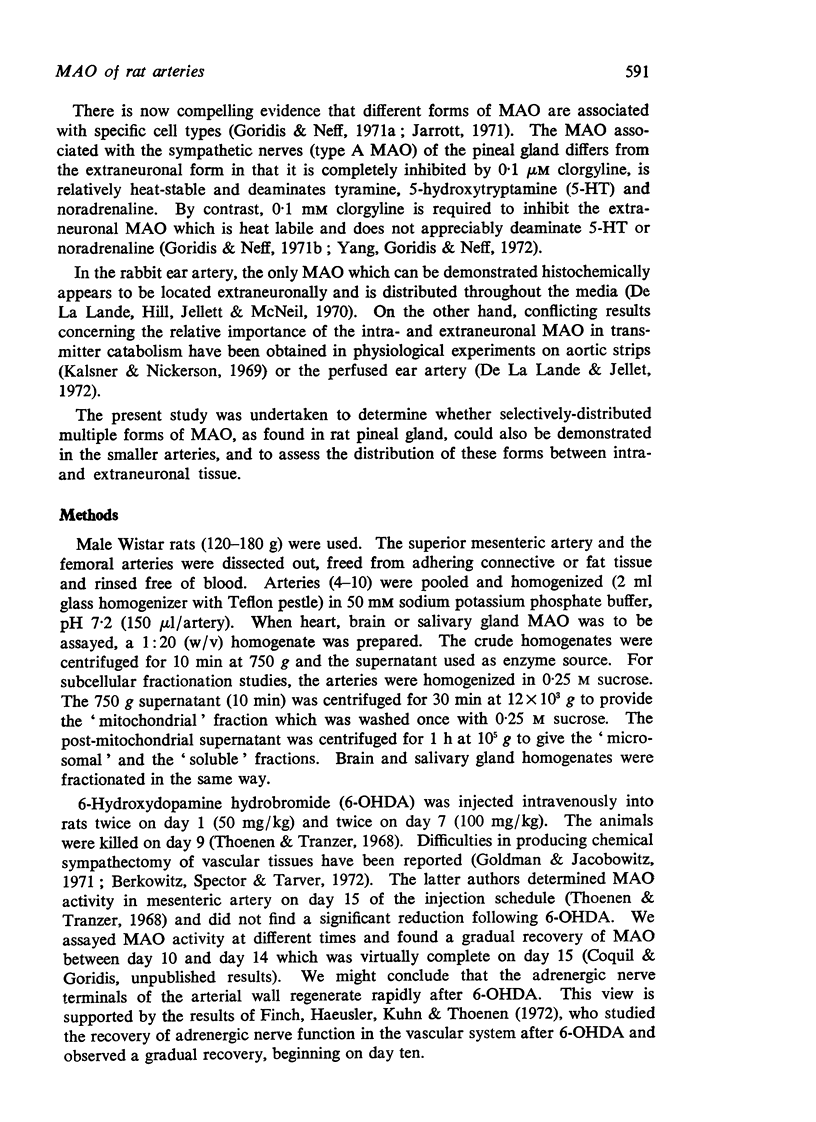
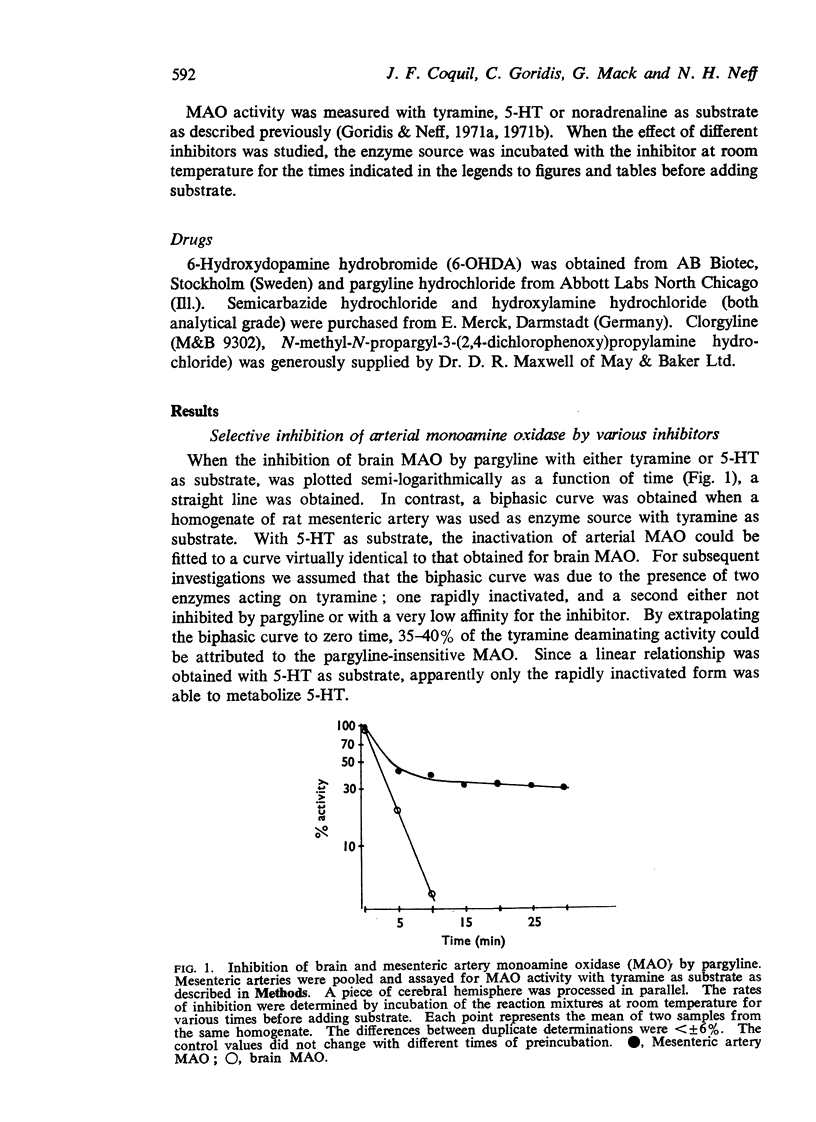
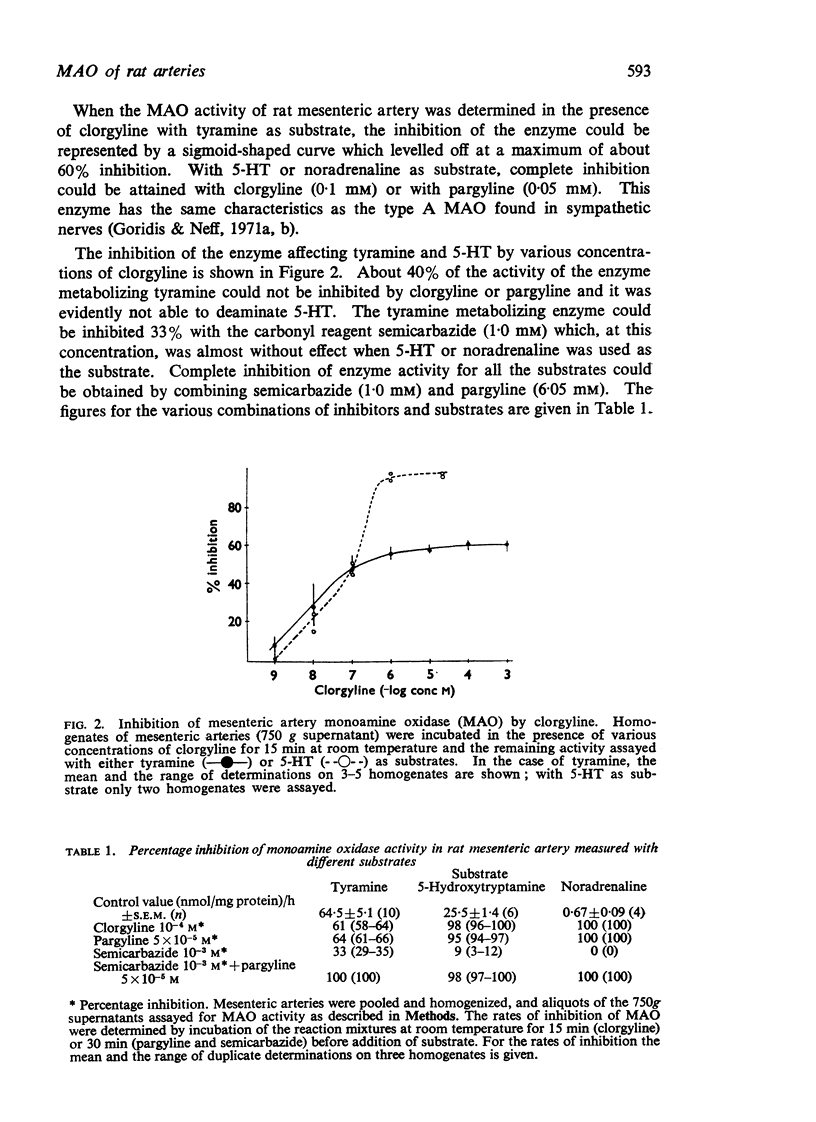
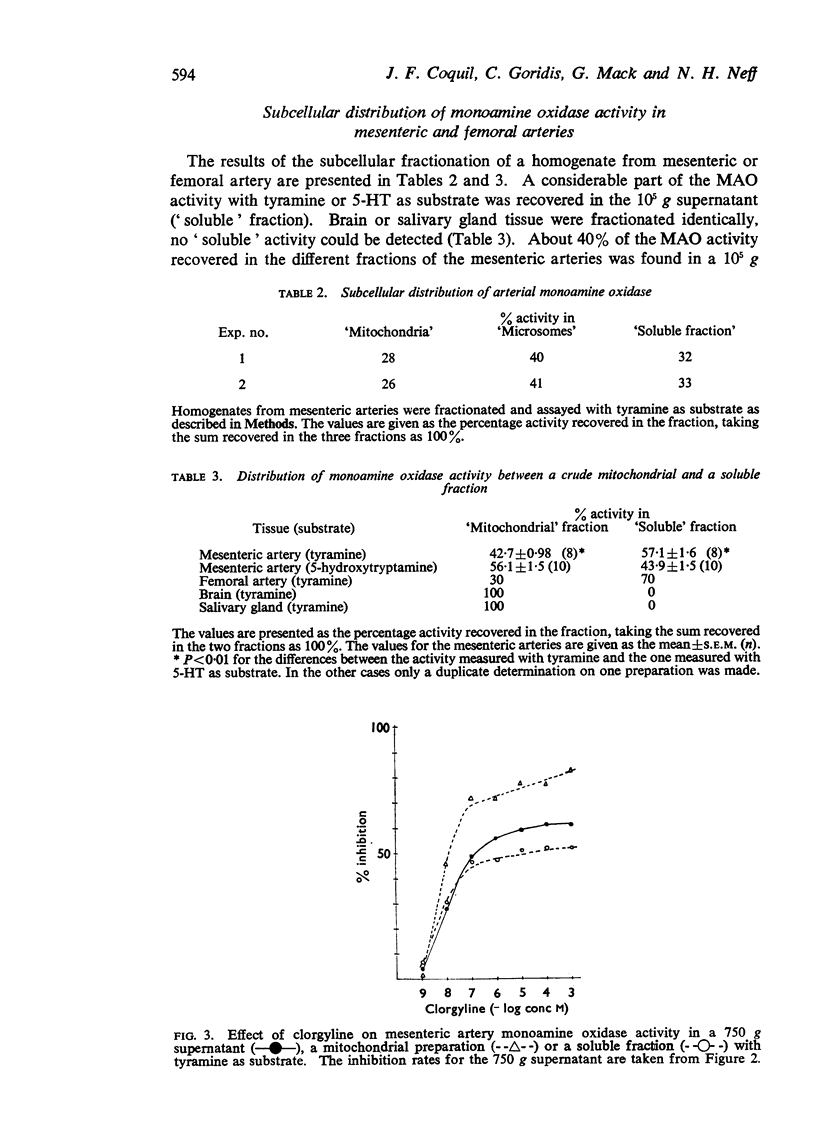
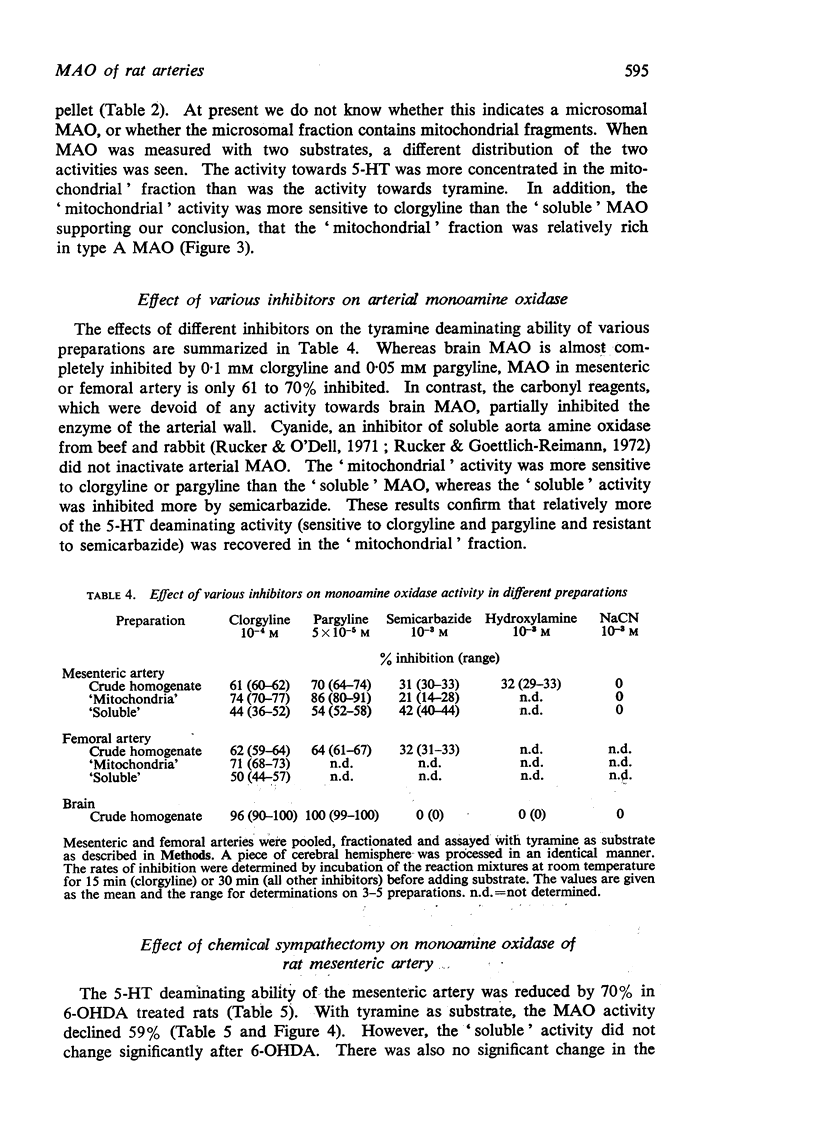
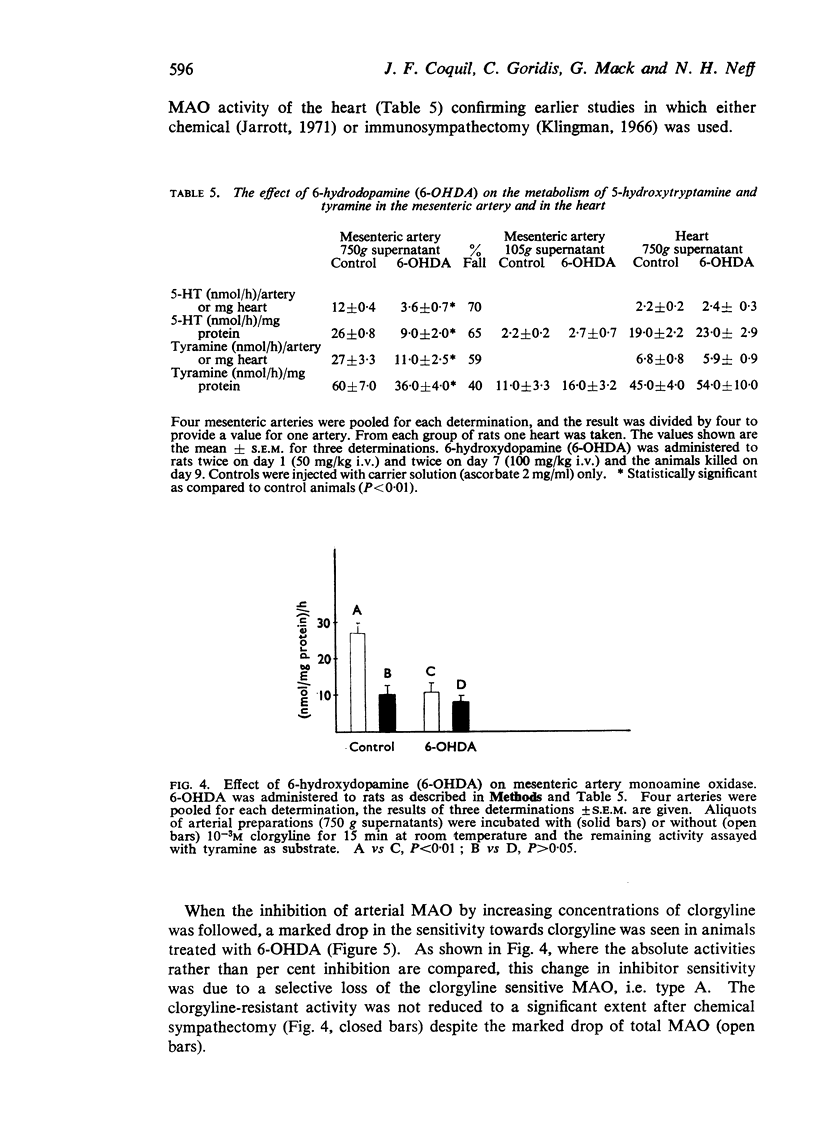
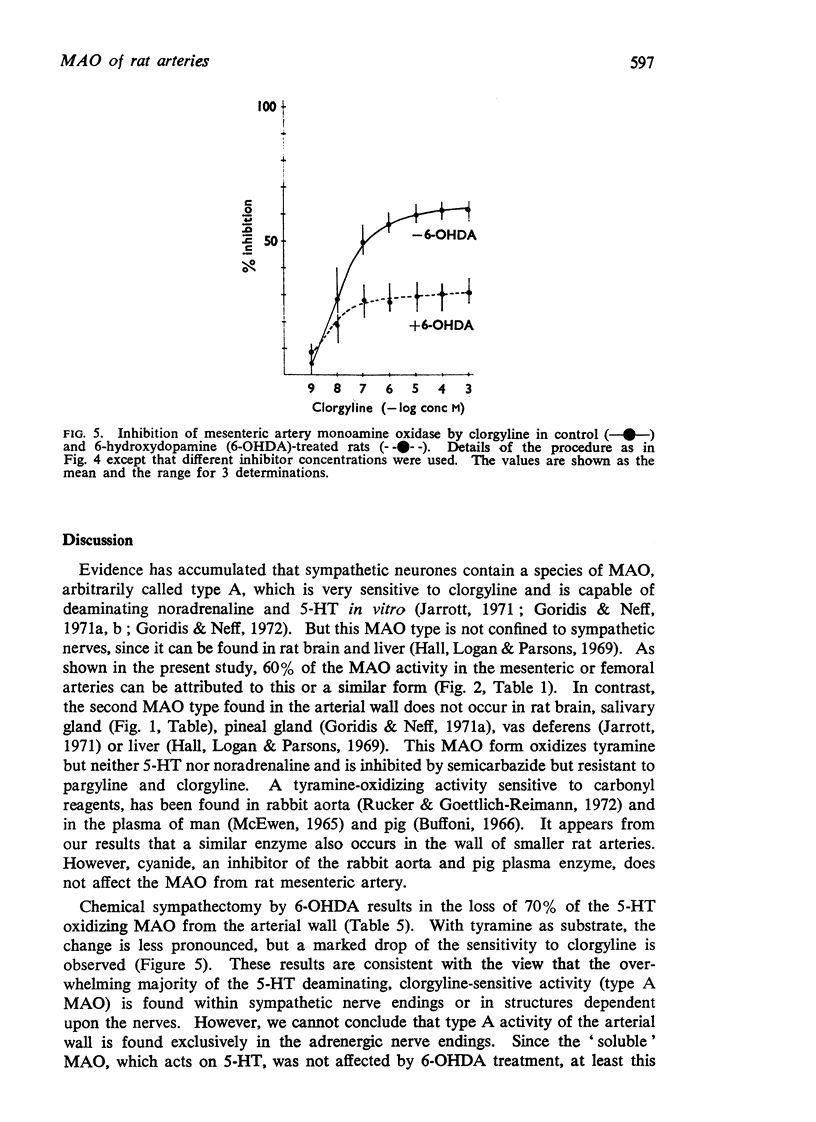
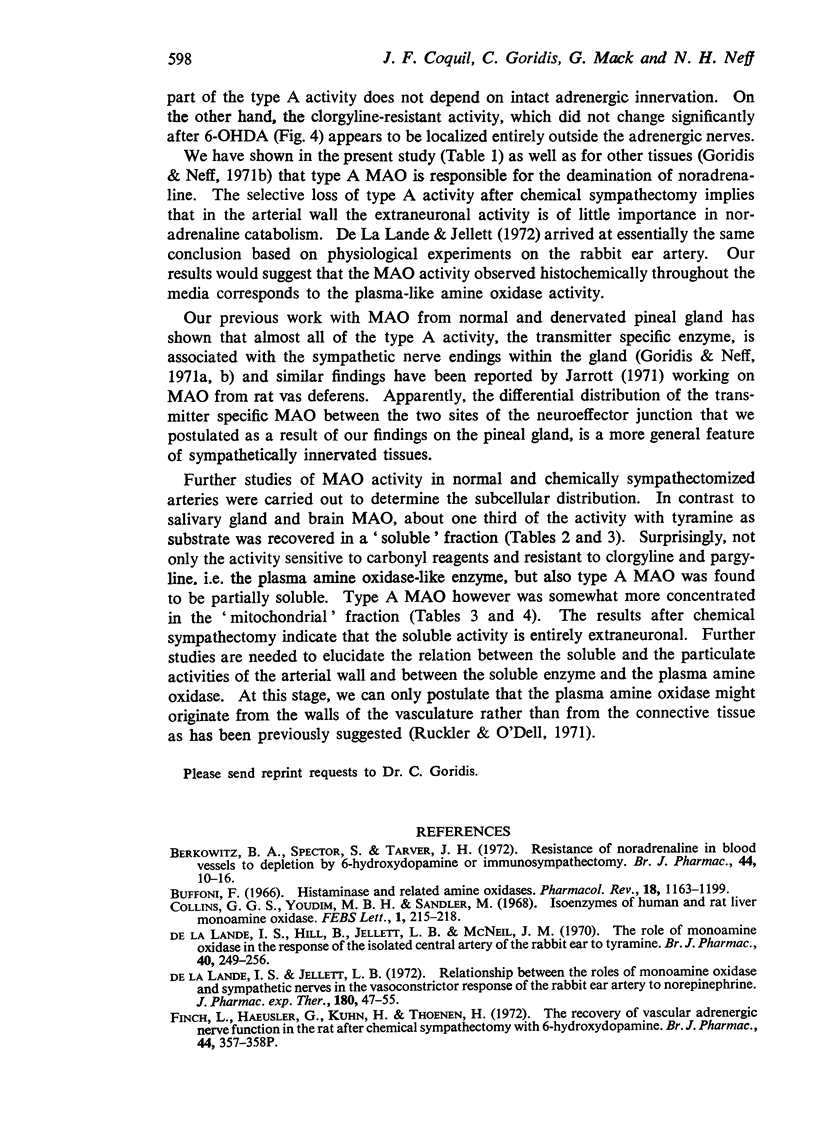
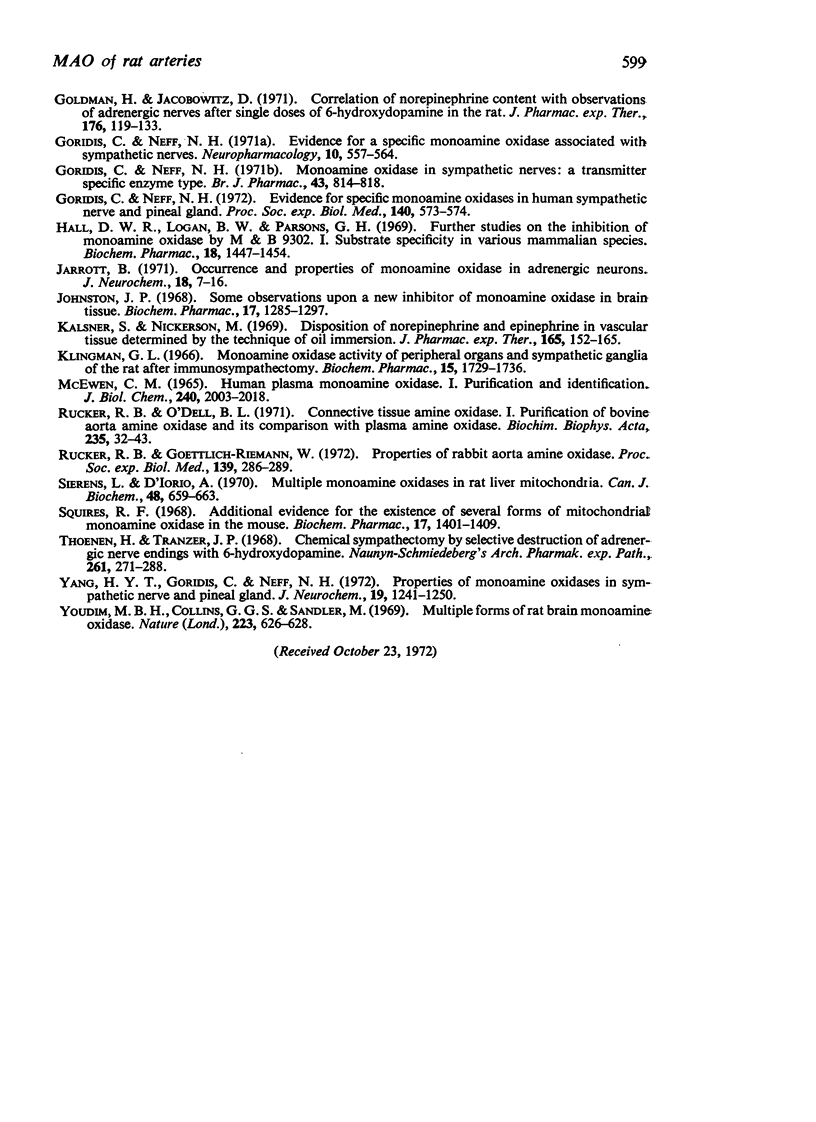
Selected References
These references are in PubMed. This may not be the complete list of references from this article.
- Berkowitz B. A., Spector S., Tarver J. H. Resistance of noradrenaline in blood vessels to depletion by 6-hydroxydopamine or immunosympathectomy. Br J Pharmacol. 1972 Jan;44(1):10–16. doi: 10.1111/j.1476-5381.1972.tb07233.x. [DOI] [PMC free article] [PubMed] [Google Scholar]
- Buffoni F. Histaminase and related amine oxidases. Pharmacol Rev. 1966 Dec;18(4):1163–1199. [PubMed] [Google Scholar]
- Collins G. G.S., Youdim M. B.H., Sandler M. Isoenzymes of human and rat liver monoamine oxidase. FEBS Lett. 1968 Sep;1(4):215–218. doi: 10.1016/0014-5793(68)80065-1. [DOI] [PubMed] [Google Scholar]
- De la Lande I. S., Hill B. D., Jellett L. B., McNeil J. M. The role of monoamine oxidase in the response of the isolated central artery of the rabbit ear to tyramine. Br J Pharmacol. 1970 Oct;40(2):249–256. doi: 10.1111/j.1476-5381.1970.tb09918.x. [DOI] [PMC free article] [PubMed] [Google Scholar]
- De la Lande I. S., Jellett L. B. Relationship between the roles of monoamine oxidase and sympathetic nerves in the vasoconstrictor response of the rabbit ear artery to norepinephrine. J Pharmacol Exp Ther. 1972 Jan;180(1):47–55. [PubMed] [Google Scholar]
- Finch L., Haeusler G., Kuhn H., Thoenen H. Proceedings: The recovery of vascular adrenergic nerve function in the rat after chemical sympathectomy with 6-hydroxydopamine. Br J Pharmacol. 1972 Feb;44(2):357P–358P. [PMC free article] [PubMed] [Google Scholar]
- Goldman H., Jacobowitz D. Correlation of norepinephrine content with observations of adrenergic nerves after a single dose of 6-hydroxydopamine in the rat. J Pharmacol Exp Ther. 1971 Jan;176(1):119–133. [PubMed] [Google Scholar]
- Goridis C., Neff N. H. Evidence for a specific monoamine oxidase associated with sympathetic nerves. Neuropharmacology. 1971 Sep;10(5):557–564. doi: 10.1016/0028-3908(71)90021-9. [DOI] [PubMed] [Google Scholar]
- Goridis C., Neff N. H. Evidence for specific monoamine oxidases in human sympathetic nerve and pineal gland. Proc Soc Exp Biol Med. 1972 Jun;140(2):573–574. doi: 10.3181/00379727-140-36506. [DOI] [PubMed] [Google Scholar]
- Goridis C., Neff N. H. Monoamine oxidase in sympathetic nerves: a transmitter specific enzyme type. Br J Pharmacol. 1971 Dec;43(4):814–818. doi: 10.1111/j.1476-5381.1971.tb07217.x. [DOI] [PMC free article] [PubMed] [Google Scholar]
- Hall D. W., Logan B. W., Parsons G. H. Further studies on the inhibition of monoamine oxidase by M and B 9302 (clorgyline). I. Substrate specificity in various mammalian species. Biochem Pharmacol. 1969 Jun;18(6):1447–1454. doi: 10.1016/0006-2952(69)90258-5. [DOI] [PubMed] [Google Scholar]
- Jarrott B. Occurrence and properties of monoamine oxidase in adrenergic neurons. J Neurochem. 1971 Jan;18(1):7–16. doi: 10.1111/j.1471-4159.1971.tb00162.x. [DOI] [PubMed] [Google Scholar]
- Johnston J. P. Some observations upon a new inhibitor of monoamine oxidase in brain tissue. Biochem Pharmacol. 1968 Jul;17(7):1285–1297. doi: 10.1016/0006-2952(68)90066-x. [DOI] [PubMed] [Google Scholar]
- Kalsner S., Nickerson M. Disposition of norepinephrine and epinephrine in vascular tissue, determined by the technique of oil immersion. J Pharmacol Exp Ther. 1969 Feb;165(2):152–165. [PubMed] [Google Scholar]
- McEwen C. M., Jr Human plasma monoamine oxidase. 1. Purification and identification. J Biol Chem. 1965 May;240(5):2003–2010. [PubMed] [Google Scholar]
- Rucker R. B., Goettlich-Riemann W. Properties of rabbit aorta amine oxidase. Proc Soc Exp Biol Med. 1972 Jan;139(1):286–289. doi: 10.3181/00379727-139-36127. [DOI] [PubMed] [Google Scholar]
- Rucker R. B., O'Dell B. L. Connective tissue amine oxidase. I. Purification of bovine aorta amine oxidase and its comparison with plasma amine oxidase. Biochim Biophys Acta. 1971 Apr 14;235(1):32–43. doi: 10.1016/0005-2744(71)90030-1. [DOI] [PubMed] [Google Scholar]
- Sierens L., D'Iorio A. Multiple monoamine oxidases in rat liver mitochondria. Can J Biochem. 1970 Jun;48(6):659–663. doi: 10.1139/o70-105. [DOI] [PubMed] [Google Scholar]
- Squires R. F. Additional evidence for the existence of several forms of mitochondrial monoamine oxidase in the mouse. Biochem Pharmacol. 1968 Jul;17(7):1401–1409. doi: 10.1016/0006-2952(68)90076-2. [DOI] [PubMed] [Google Scholar]
- Thoenen H., Tranzer J. P. Chemical sympathectomy by selective destruction of adrenergic nerve endings with 6-Hydroxydopamine. Naunyn Schmiedebergs Arch Exp Pathol Pharmakol. 1968;261(3):271–288. doi: 10.1007/BF00536990. [DOI] [PubMed] [Google Scholar]
- Yang H. Y., Goridis C., Neff N. H. Properties of monoamine oxidases in sympathetic nerve and pineal gland. J Neurochem. 1972 May;19(5):1241–1250. doi: 10.1111/j.1471-4159.1972.tb01450.x. [DOI] [PubMed] [Google Scholar]
- Youdim M. B., Collins G. G., Sandler M. Multiple forms of rat brain monoamine oxidase. Nature. 1969 Aug 9;223(5206):626–628. doi: 10.1038/223626a0. [DOI] [PubMed] [Google Scholar]


